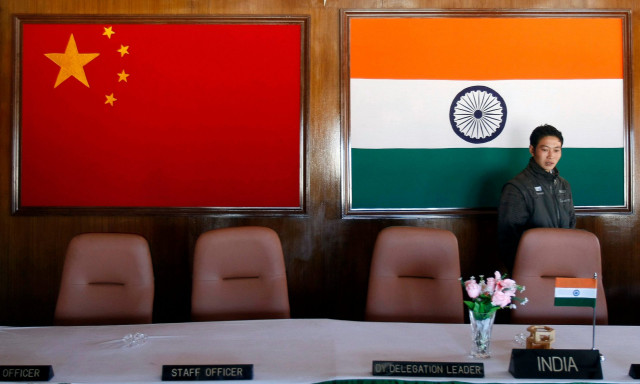The new Great Game in Asia?
There is a view that the current standoff between China-India is much more than just a border issue

A Reuters file image.
China and India share around 3,500km long border, most of which is not demarcated and thus called the Line of Actual Control (LAC). At the heart of the dispute is China’s claim of some 90,000 square kilometres of territory in India’s northeast, including the Indian state of Arunachal Pradesh. India on the other hand insists China occupies 38,000 square kilometres of its territory in the Aksai Chin Plateau in the western Himalayas, including part of Ladakh region.
China and India went to a war in 1962 with the latter suffering a humiliating defeat but the border dispute remained unresolved. In 2017, the two countries had a 76-day-long military standoff at Dokhlam when India tried to stop China to build a road in the disputed area at the China-Bhutan border. The stalemate ended with both sides claiming victory.
The current standoff is, however, being seen as much more serious than the previous ones. On May 5, Indian and Chinese soldiers clashed at Ladakh’s Galwan valley. They beat each other with fists and sticks, resulting in dozens getting injured on both sides. Similar incidents had been reported in other regions including Sikkim. Both sides have a different story to tell.
Indian officials claim that it all started when Chinese soldiers entered the disputed territory of Ladakh at three different points, erecting tents and guard posts. They said the Chinese soldiers ignored repeated verbal warnings to depart, triggering shouting matches, stone-throwing and fistfights.
The stalemate was, however, triggered by India’s construction of roads and air strips in the region, with China strongly contesting. The question is: Will the situation de-escalate or lead to a larger conflict?
Both Beijing and New Delhi are, at least publically, trying to downplay the standoff. In fact, Indian response to the skirmishes was very guarded. Unlike PM Narendra Modi’s aggressive posturing towards Pakistan, he is completely silent on the tension with China. He chaired a high-level meeting of three services chiefs and his national security adviser on the issue, but no official statement was issued after that. One of the reasons is China’s superior defence capabilities as against those of India — standing at $70 billion and $260 billion, respectively.
There is a view that the current standoff between the two countries is much more than just a border issue. It is seen as a larger strategic game being played out in Asia. India, under Modi, has tried to change the status quo of territorial dispute not only with Pakistan but also with China.
The Indian move to revoke the special status of the disputed Jammu and Kashmir region angered China because it also altered the status of Ladakh, a region claimed by Beijing. China is also upset over India’s continued opposition to CPEC as it claims the corridor passes through the disputed Gilgit-Baltistan region. It is believed that India is opposing BRI at the behest of the US, which views President Xi’s initiative as a way to assert the Chinese authority over the region and the rest of the world.
But China, by flexing its military muscles along the Indian border, has apparently conveyed a message to India and its western allies that if they undermine its strategic interests, it has options at its disposal to hit back.
Under the circumstances, Pakistan must not remain oblivious to the changing strategic realties, and needs to adopt a proactive approach in order to protect its interests.
Published in The Express Tribune, June 1st, 2020.
Like Opinion & Editorial on Facebook, follow @ETOpEd on Twitter to receive all updates on all our daily pieces.













COMMENTS
Comments are moderated and generally will be posted if they are on-topic and not abusive.
For more information, please see our Comments FAQ